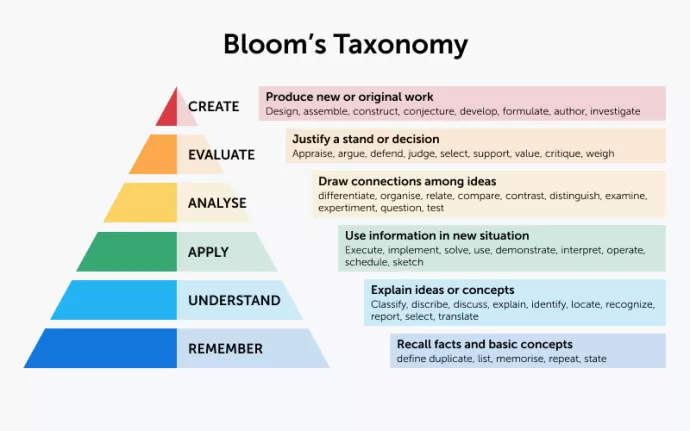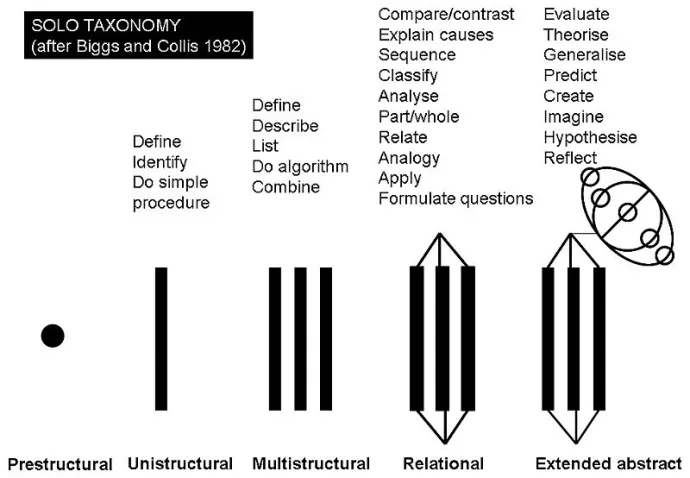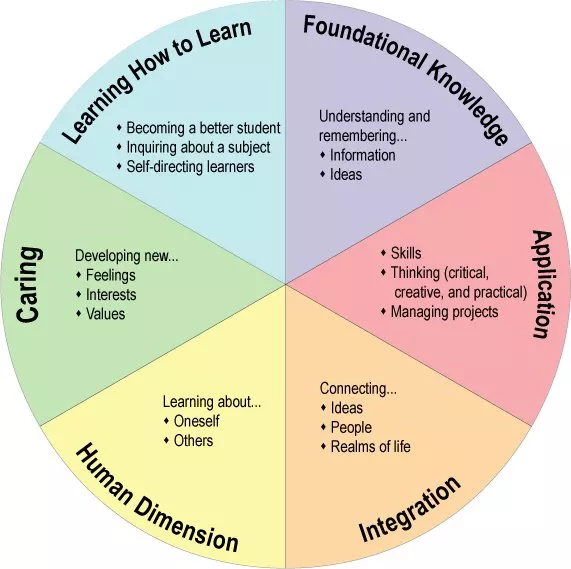What is a learning outcome?
A learning outcome is a statement describing the knowledge, skills, or attitudes that instructors intend learners to have acquired at the end of a course.
Learning outcomes signal a focus on the desired learning achievement, rather than what an instructor intends to cover. They aim to make expectations explicit and transparent, helping to guide students’ learning. Learning outcomes should help shape the learning activities, assessments, and evaluation within a course. They play an important role in the alignment of course activities. For students, learning outcomes provide clarity around the instructor’s expectations and how students will be required to demonstrate their learning. For instructors, learning outcomes can help point to appropriate methods of assessment and they prompt consideration of how success in a course will be evaluated.
Below are three sample course-level learning outcomes.
By the end of this course, students will be able to:
- Describe the major factors that influenced the development of the Canadian political system.
- Analyze the diverse ways in which visual evidence can be interpreted, including consideration of the possibilities and limitations of the major methods of the discipline.
- Create examples and counterexamples to illustrate novel definitions and concepts about sets and functions of real numbers.
Where should I start?
There are a number of frameworks that may be helpful places to begin thinking about your learning outcomes. The most common are outlined very briefly below. Each of these frameworks will help you think about your courses in slightly different ways. We encourage you to explore each and refer to the “More Resources” section for more detailed information.
Taxonomy of Educational Objectives (Bloom’s Taxonomy).
When you are ready to begin articulating your learning outcomes, Bloom's Taxonomy (1956; revised by Anderson & Krathwohl in 2001) provides a useful vocabulary of verbs that help describe and classify observable knowledge, attitudes, and skills. These verbs can help you to be more precise in communicating your expectations.

Structure of Observed Learning Outcomes (SOLO).
When you want to use learning outcomes to scaffold learning, the SOLO Taxonomy (Biggs & Collis, 1982) provides a framework for classifying how a learner progresses from surface understanding to deep learning.

Taxonomy of Significant Learning.
When you want to think holistically about the areas of learning your course will cover, Fink’s (2003) Taxonomy of Significant Learning is a useful tool. Fink’s work is helpful in addressing important kinds of learning that sometimes do not emerge easily from other taxonomies of learning.

How do I structure my learning outcomes?
Start by identifying the essential knowledge, skills, or attitudes you intend learners to have acquired at the end of the course. Use the levels of learning articulated in Bloom’s Taxonomy or the SOLO Taxonomy to identify verbs that describe the level of complexity students should be able to demonstrate by the end of the course. Select a verb that communicates what you expect students to do to demonstrate/articulate their learning and ensure this verb matches the level of complexity you expect. Add context and criteria, as appropriate.
How do I know if the learning outcome I’ve written is effective?
There are a number of characteristics of well-written learning outcomes. Learning outcomes should be focused on the learner. They should describe the knowledge or skills that students will employ, rather than explain what the instructor will cover in the course. Learning outcomes should be measurable, and thus easily translated into an assignment or exam question. They should be observable, meaning that they are capable of being assessed. They should be specific and avoid the use of unnecessary jargon or vague terms (e.g., “be familiar with” or “be exposed to”). They should be realistic and take into consideration the time and resources allowed by the course. They should be clear and easily understood by a learner. Compound statements should be used with caution as they can make expectations ambiguous and can be difficult to assess. For example, consider the following learning outcome: “analyze data using inferential statistics to produce meaningful conclusions and explain findings in writing.” This addresses two different expectations: analyze and explain If a student is able to analyze but struggles with explain, have they achieved the outcome? Finally, learning outcomes should be aligned to specific assessments and learning activities, and to the overall outcomes of a program.
If you are still unsure of how to create learning outcomes for your course or program, the Educational Developers at the Robert Gillespie Academic Skills Centre can help you to draft, revise, and align the learning outcomes for your courses.
Resources
Anderson, L. W., & Krathwohl, D. R. (2001). A Taxonomy for Learning, Teaching and Assessing: A Revision of Bloom’s Taxonomy of Educational Objectives: Complete Edition. New York: Longman.
Biggs, J. B. & Tang, C. (2011). Teaching for quality learning at university (3rd Ed). Maidenhead: Open University Press.
Blumberg, P. (2009). Maximizing learning through course alignment and experience with different types of knowledge. Innovative Higher Education, 34(2), 93-103
Fink, D.L. (2013). Creating significant learning experiences: an integrated approach to designing college courses. San Francisco, CA: Jossey-Bass.
Greenleaf, E. (2008). Developing Learning Outcomes: A Guide for University of Toronto Faculty. Centre for Teaching Support & Innovation, University of Toronto.
Potter, M. K. & Kustra, E. (2012). A Primer on Learning Outcomes and the SOLO Taxonomy. Centre for Teaching and Learning, University of Windsor.
